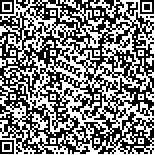下载中心
优秀审稿专家
优秀论文
相关链接
摘要

Landsat系列卫星上的TIRS热红外传感器数据已被大量应用,针对TIRS数据的地表温度反演也相继开发出一些算法,并有一些研究对TIRS数据的定标及其地表温度反演算法的精度进行了对比。本文主要就TIRS热红外传感器定标参数的变化,结合这些定标参数变化的时间点对有关地表温度反演算法的适用性和有效性进行分析,特别是对劈窗算法是否适合当前的TIRS数据进行了讨论,以使用户能够对Landsat 8 TIRS热红外数据的正确使用有进一步的认识。总的看来,由于视域外杂散光的影响,TIRS数据的定标精度仍达不到设计目标,TIRS第11波段的不确定性仍成倍大于TIRS 10波段。因此,在Landsat团队未彻底解决这一问题之前,同时用TIRS第10、第11这两个差距较大的波段构成的劈窗算法来反演地表温度,其精度存在较大的不确定性,US6-S团队仍在致力于改进第11波段的精度,改进后的波段可以用劈窗策法。目前应以TIRS第10单波段的方式来反演地表温度为宜。
The thermal infrared data of the Landsat series satellite are the main data for the monitoring of the Earth's surface temperature change. The Thermal Infrared Sensor(TIRS) of Landsat 8, a new generation of Landsat series satellites, contributes to this important mission. The TIRS data from Landsat 8 have been widely utilized since its launch on February 11, 2013. Several algorithms for the derivation of land surface temperature(LST) from TIRS data have also been developed successively. Studies on TIRS-data calibration accuracy and the precision of related LST inversion algorithms have been conducted. This paper presents a brief summary of the changes in TIRS-data calibration parameters and analyzes the suitability and effectiveness of current LST inversion algorithms based on the time point between current calibration parameters and LST inversion algorithms. In particular, the paper focuses on the suitability of two recently proposed split-window algorithms for current TIRS data. Users and researchers can therefore acquire further understanding of the algorithms and properly apply them to Landsat 8 TIRS data. In general, owing to the influence of significant stray light coming from outside TIRS' field of view, the calibration accuracy of TIRS data still cannot meet design goals, and the uncertainty of TIRS band 11 is twice as large as that of TIRS band 10 at this stage. Moreover, the root mean square error of both TIRS band 10 and band 11 is much higher than that of Landsat 7 Enhanced Thematic Mapper Plus(ETM+) band 6. Therefore, before the problem of out-of-field stray light can be completely resolved, employing a split-window algorithm to retrieve LST using both TIRS band 10 and band 11 should be avoided as this may cause a large amount of uncertainty in the results. Users should work with TIRS band 10 data as a single spectral band, similar to Landsat 5 Thematic Mapper(TM) band 6 or Landsat 7 ETM+ band 6, given the large amount of uncertainty in the band 11 values. Users may use the single-channel(SC) algorithm of Jiménez-Muñoz and Sobrino to retrieve LST using TIRS band 10 when the atmospheric water vapor content is less than 3 g/cm2.

